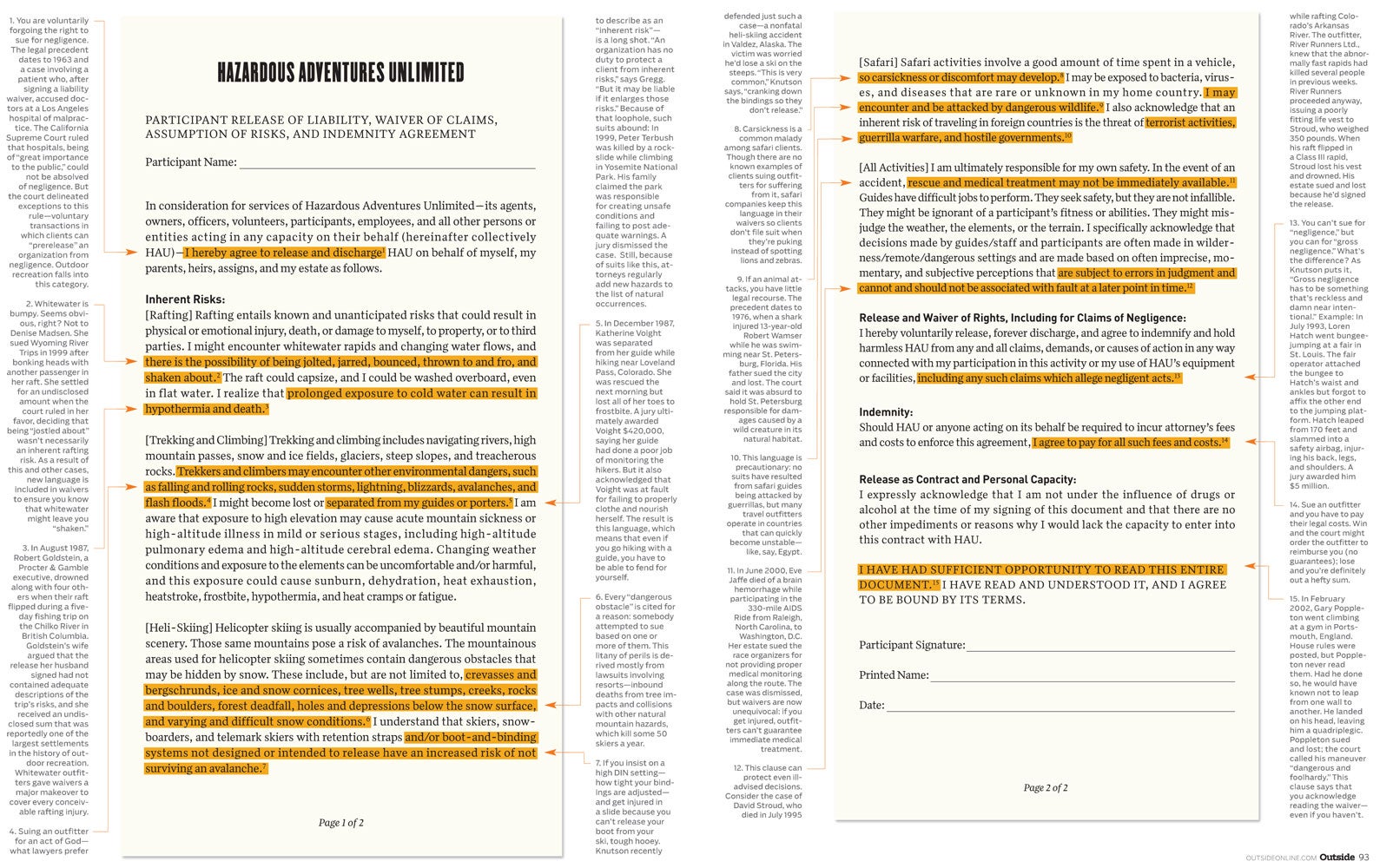THE TIME HAS COME. You've saved up for the adventure of a lifetime, and departure is imminent. But before you can raft the Grand Canyon, heli-ski Alaska's Chugach Range, or climb Kilimanjaro, you need to get by a pesky gatekeeper: the liability-release waiver. If you're like most clients, you'll sign without reading a word. But you should know what you're getting into. “It's just like signing a mortgage,” says Tracey Knutson, an Anchorage-based attorney who represents outfitters from Alaska to Antarctica. “This is a binding contract.” More to the point, it's a binding contract that leaves you powerless. Refuse to sign the waiver and you'll be sent packing with a refund. If you sign, then get hurt and file suit? Good luck鈥攋udges toss out about 90 percent of recreation-based lawsuits.

This wasn't always the case. “I recall many large outfits not using waivers in the early seventies,” says Reb Gregg, a Houston-based attorney who lectures about recreational liability. So how did things get so contentious? To find out, we constructed an abridged sample waiver using language from the contracts of a few leading outfitters, then dug up the lawsuits that prompted the bombproof legalese. The result is a look at 50 years of ski accidents, shark attacks, rafting mishaps, and negligent guides. Read on鈥攖hen sign at your own risk.


